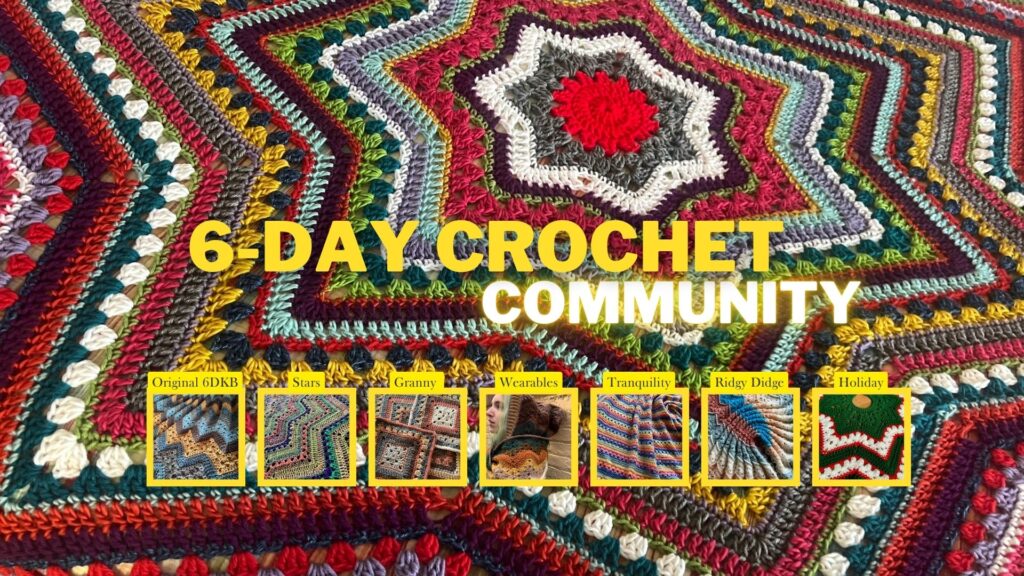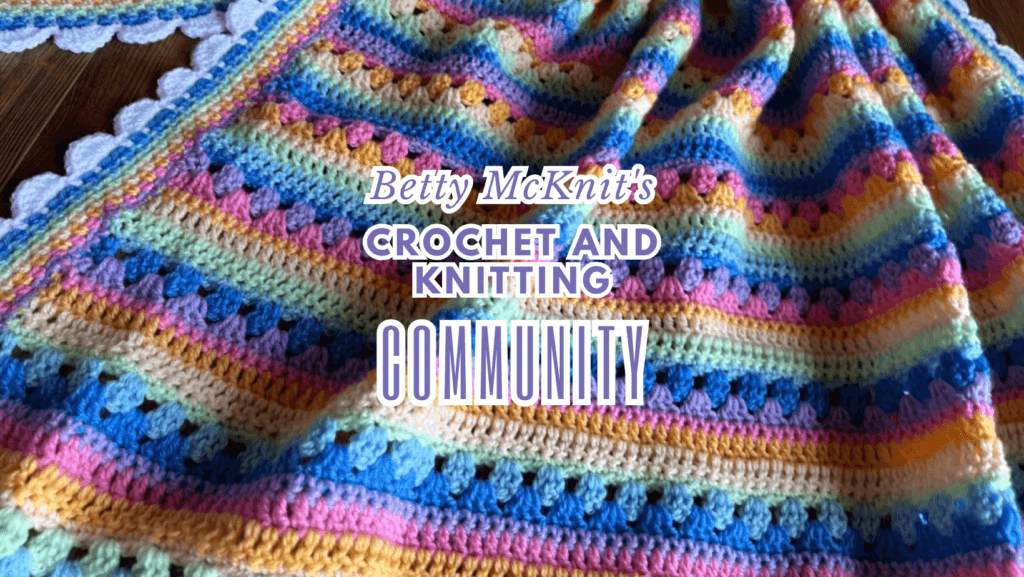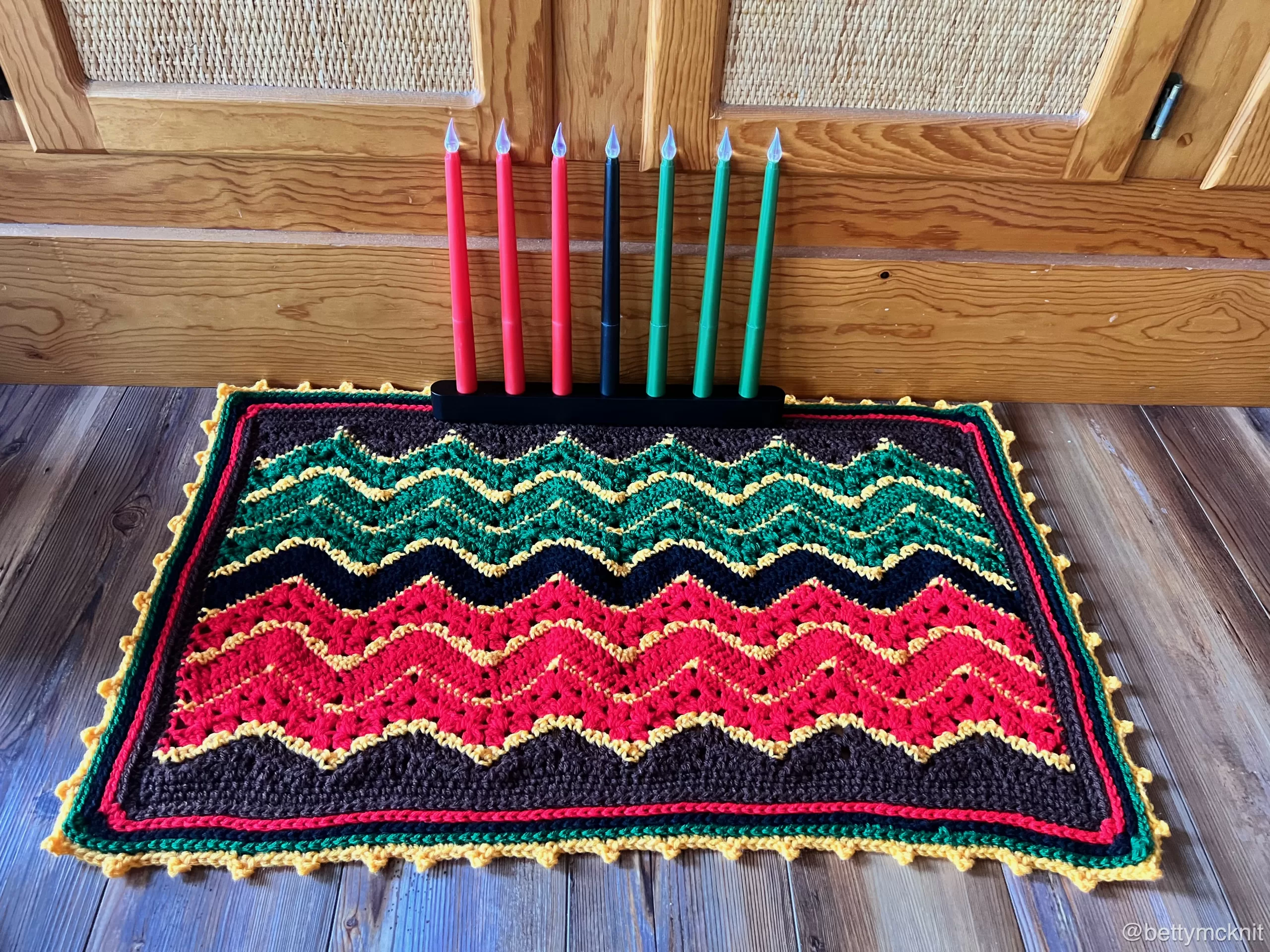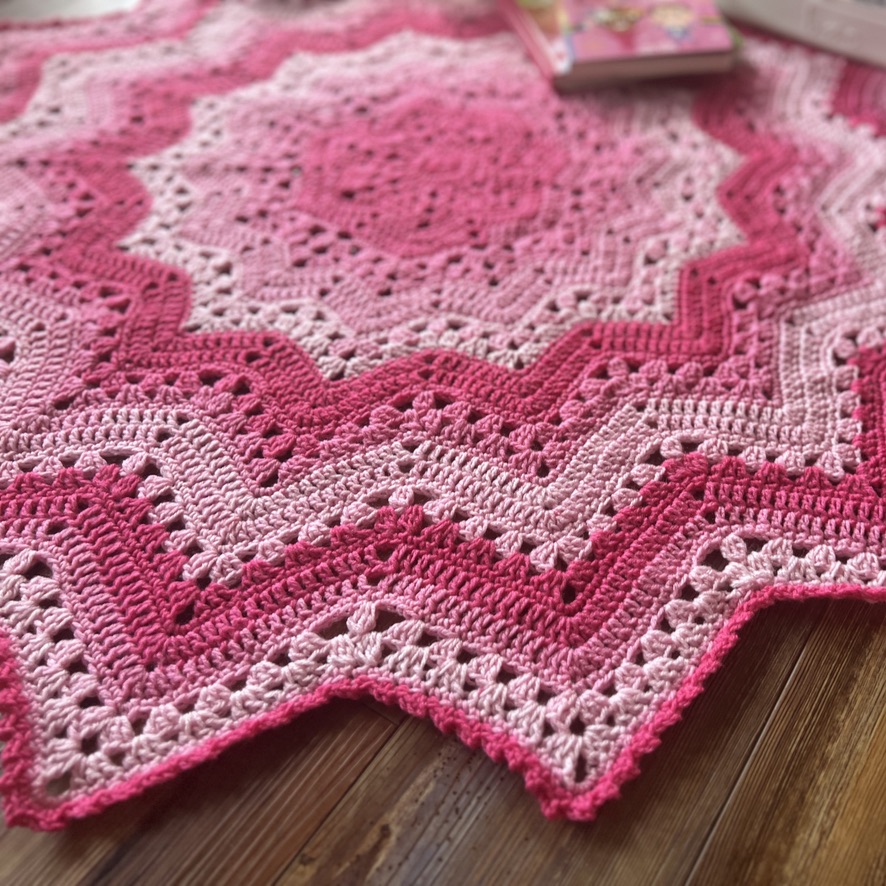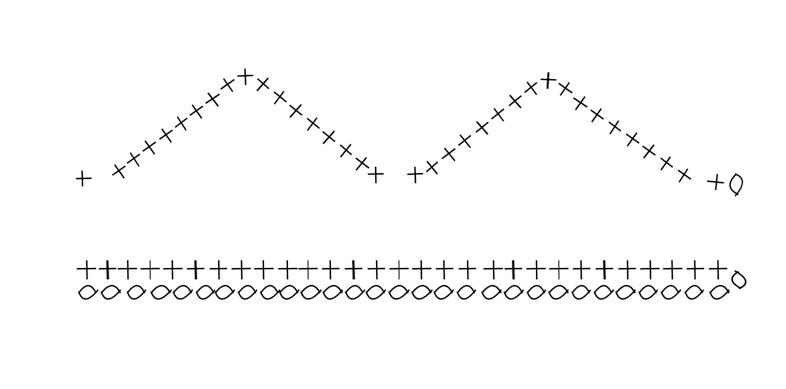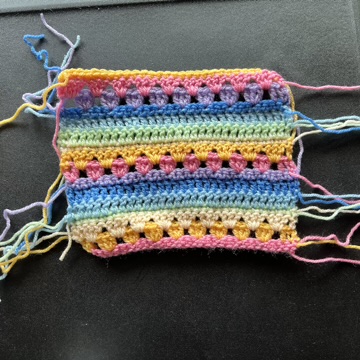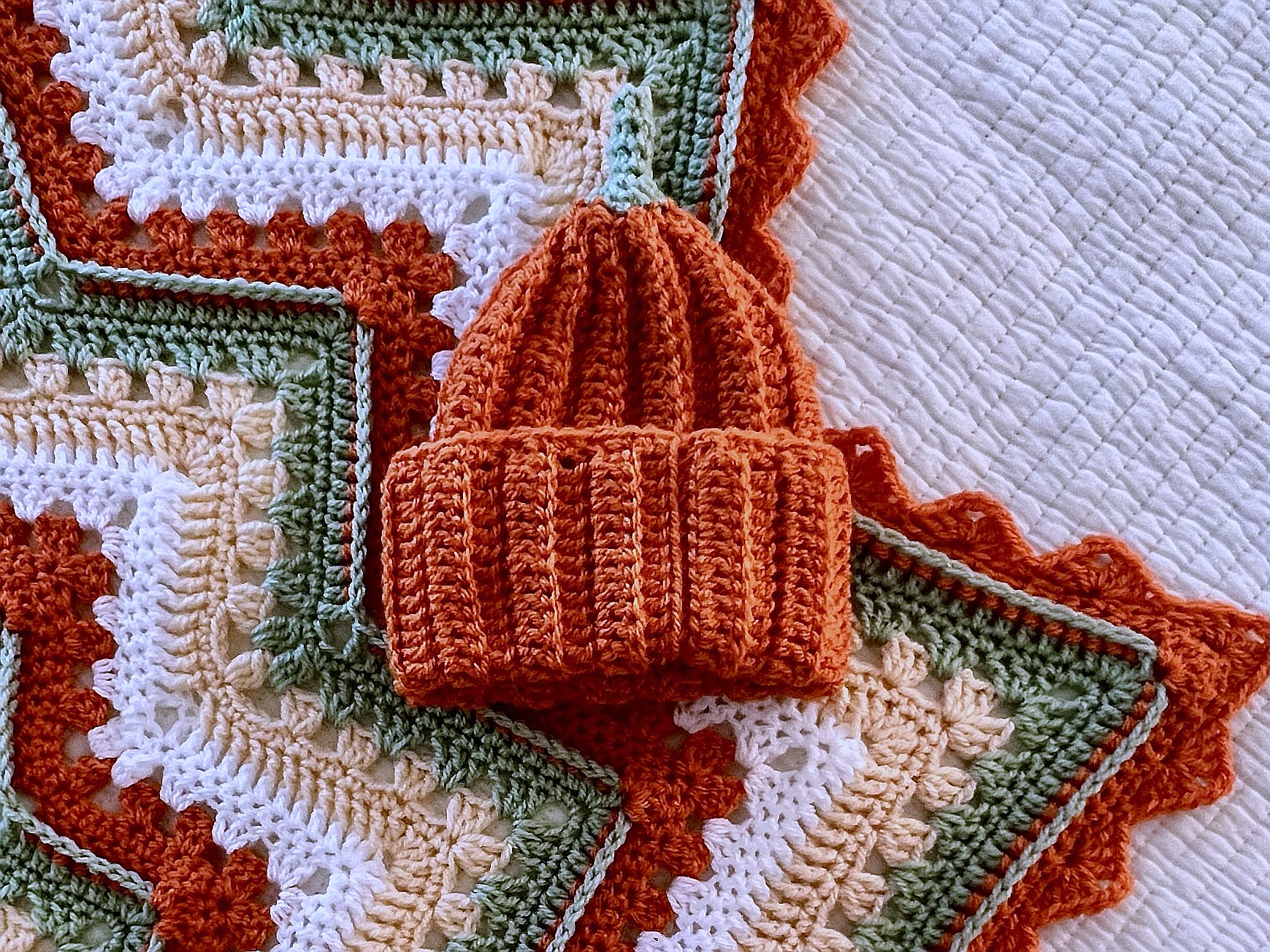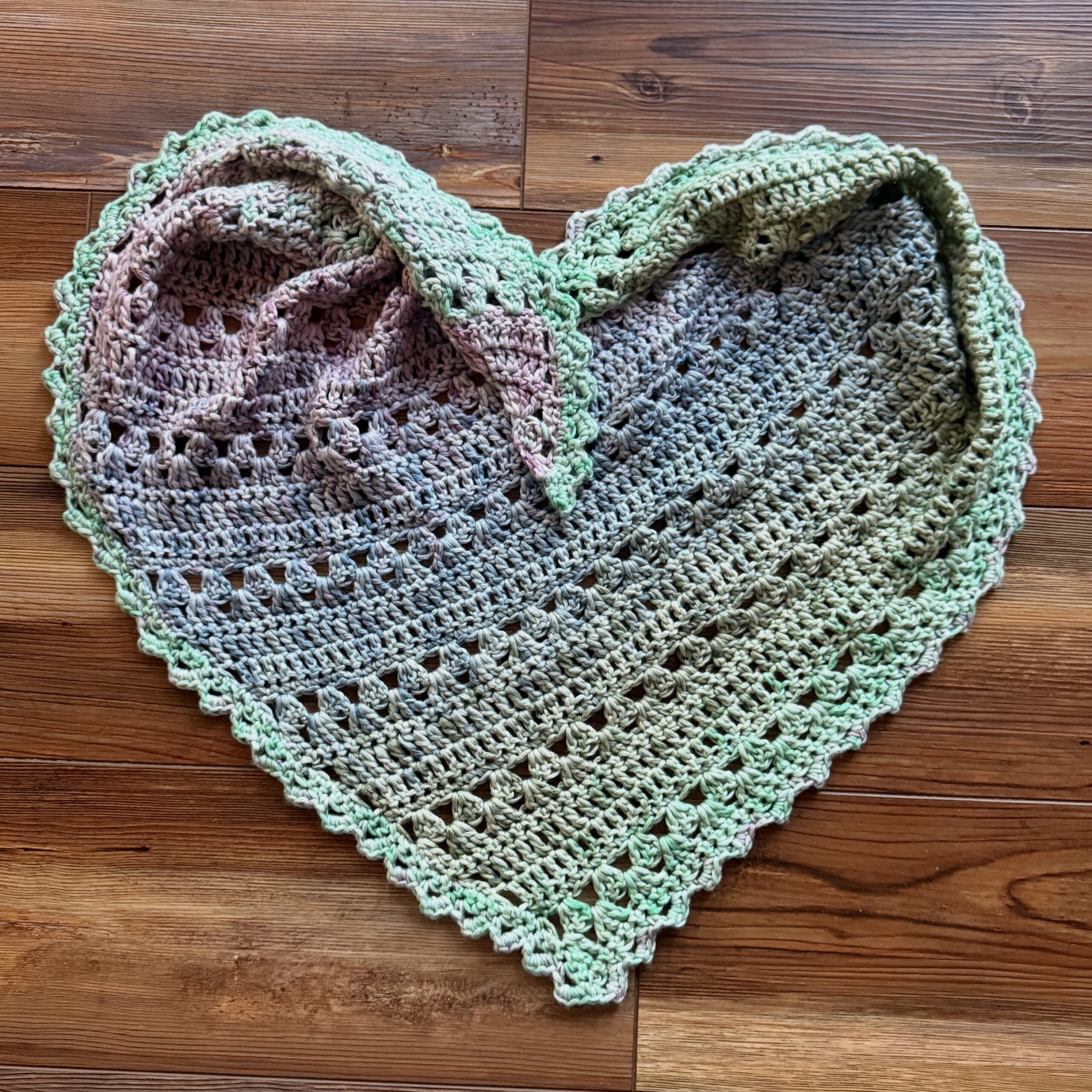6-Day Ridgy Didge Blanket
A variation of the classic crochet pattern the
6-Day Kid Blanket by Betty McKnit
This page contains affiliate links. If you click these links and buy something on the page they take you to, I may, at no additional cost to you, earn a commission. I only affiliate with products and companies I feel good about. Thank you for your support!
Introduction
This blanket is a variation on the classic 6-Day Kid Blanket (6DKB). This textured stripe was conceptualized by Diane Kagay and members of the 6-Day Crochet Group and was named by Sue McKinnon and Kati Poli.
Other versions of this pattern include the 6-Day Ridgy Didge Baby Blanket, and 6-Day Ridgy Didge Star, Superstar and Supernova blankets. You can add the textured Ridgy Didge to any of the 6-Day Crochet patterns.
This pattern is provided free with advertisements on this page. If you would like an ad-free .pdf, you can purchase one at the bottom of the page. The .pdf is the same as this pattern, with the exception of the ads.
What’s the difference between this pattern and the original 6DKB?
- Size – the original blanket was toddler size, this pattern makes a large blanket and is adaptable to any size and any weight of yarn.
- Yarn Weight – The original blanket used chunky weight yarn, this pattern uses #4 Worsted Weight but can be adapted to any yarn.
- Edge and Border – this pattern has instructions for an edge and a custom border, the original only gave instructions for tassels.
- Stitches: this pattern uses the same six rows of stitches that the 6-Day Kid Blanket uses with color changes on a different row and textured stitches added.
- Straight top and bottom: The original started and ended with chevrons, this blanket has options to start and end with a straight edge with optional instructions for chevron start.
Details
US Terminology with UK Conversions provided
Finished Size: 62” x 79
Gauge: 14 st and 18 rows in sc = 4” x 4”
Skill Level: Easy
Yarn
5316 yards of #4 Worsted Weight yarn
Shown in Lion Brand Re-Spun) in six colors, yardage divided as follows:
1000 yards in each of the following four colors: Color A Fjord, Color B Cranberry, Color C Heliotrope, Color D Sahara,
658 yards in each of the following two colors: Color E Dark Denim, Color F Amber
Hook
I (5.5 mm) and J (6 mm)
Abbreviations
6DKB: 6-Day Kid Blanket
ch: chain
dc: double crochet
dc3tog: (cluster, not decrease)
FPdc: front post double crochet
FPhdc: front post half double crochet
FPsc: front post single crochet
hdc: half double crochet
picot: sc, ch 1, sc in side of sc just made
PICOT: sc, ch 3, sc in side of sc just made
rep: repeat
sc: single crochet
sk: skip
sl st: slip stitch
sp(s): space(s)
yo: yarn over
| US terms abbreviation | UK terms abbreviation |
| single crochet sc | double crochet dc |
| half double crochet hdc | half treble crochet htr |
| double crochet dc | treble crochet tr |
Special Stitches
dc3tog: (cluster): yo, insert hook in next st, yo, pull up a loop, yo, pull through 2 loops, [yo, insert hook into same st, yo, pull up a loop, yo, pull through two loops] 2 times. yo and pull through 4 loops.
Front Post Stitches (FPdc, FPhdc, FPsc) are worked from the front around the post of the stitch in the row below.
picot: sc, ch 1, sc in side of sc just made.
PICOT: sc, ch 3, sc in side of sc just made
Repeats
( ) Work stitches in parentheses in the same st or sp.
[ ] Repeat everything within the brackets the indicated number of times.
* Indicates beginning of repeat
** Indicates end of repeat on last repeat only.
Does it really only take 6 Days to make?
The original 6DKB was a toddler sized blanket made with chunky yarn and took me six days of easy crochet – about two hours per day – to make. This variation uses the very similar stitches but uses a different weight yarn and is much, much larger. I crocheted this entire blanket on live videos, working 2-4 hours each time and it took me approximately 22 days to complete this project (including swatching and the border). The replay of those videos is available on my YouTube channel so you can work right along with me if you like.
Swatch First
Before you begin, I suggest you make a swatch following this article..
- If this is your first 6DKB, you may find the first few rows are a little tricky. You’ll sidestep common mistakes and avoid the frustration of frogging hours of hard work by taking the time to swatch first.
- If you are planning to customize the size, change out the yarn, or use a different number of colors than I did, you’ll need your swatch to figure out your starting repeats and chains.
How to Resize
This pattern creates a large blanket. If you would like to change yarns or make a different size, please see the chart at the end of this pattern with estimates for different sizes, and use your swatch as a guide to make a custom blanket in any size with any yarn you like.
Stripe Symmetry
If you choose to use a different number of colors than I did, you will need to plan ahead to make your stripes symmetrical. See my note below about changing colors and plan ahead for the first and last stripes to match.
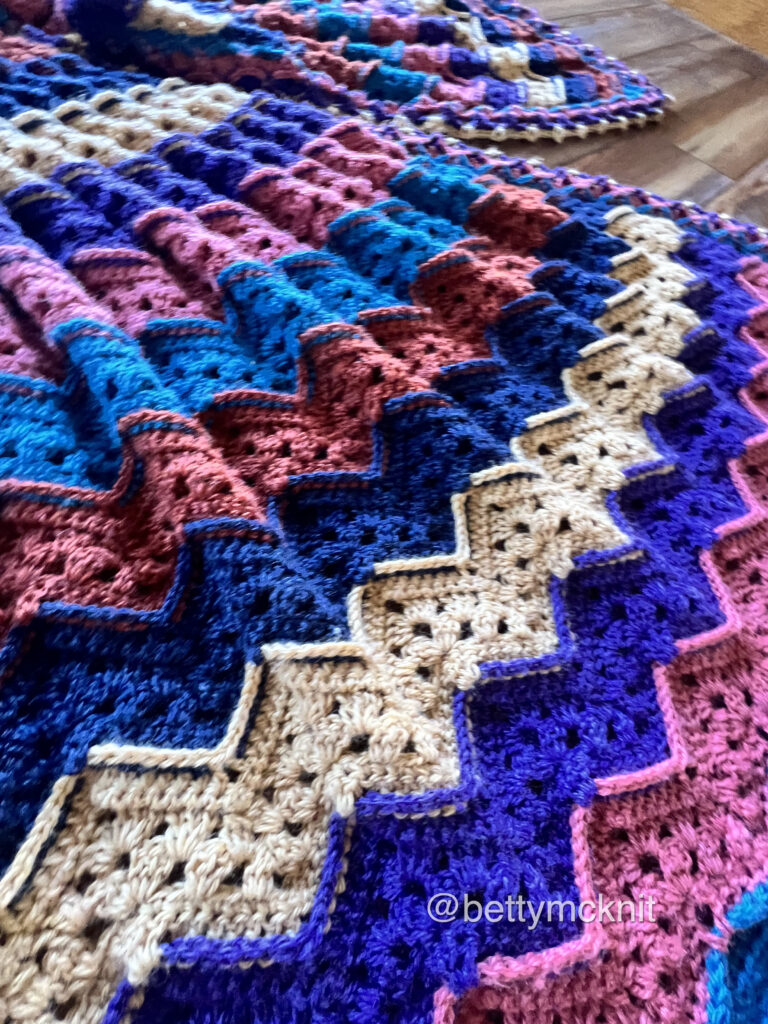
Side edges
Here are some steps you can take to help alleviate curling on the sides of your blanket.
- When working the last stitch of the row, insert the hook from back to front, instead of from front to back.
- Work an edge into the turning chains and sc/dc stitches on the sides of the work as described at the end of this pattern, rather than into the spaces.
- Wash your blanket once it is complete, and lay it out flat to dry, gently stretching and shaping the edges.
Changing Colors:
No two 6-Day Blankets are alike. The pattern can take on many different looks depending on which rows the color changes fall on. This stripe is called the Ridgy Didge, and it was conceptualized by Diane Kagay, aka “Dee Louise” and the name was suggested by Sue McKinnon and Kati Poli. The color changes happen on row six along with a texture row.
To change yarn on color changes, draw the new color through the last two loops of the last stitch of the row before the color change.
It’s also possible to make this blanket in a solid color, or with self-striping cake yarn.
Square Top and Bottom
I have included instructions for squaring off the top and bottom of your blanket in pattern with this stripe technique. If you prefer a chevron top and bottom of your blanket, you can begin by chaining a multiple of 17+3 and pick up this pattern at row 2. If you choose chevron edges, remember that the pattern is meant to end on Row 4 (not 7).
About the row numbers
In order to provide consistency across all of the 6-Day Kid Blanket pattern variations, I’ve numbered the rows to correspond to the original pattern. The cluster rows are always Row or Round 2 and 3, the dc rows are always Row or Round 5 and 6, and the sc rows are always Row or Round 4 and 7. This makes it easy to adapt the many variations of the 6-Day Kid Blanket.
The pattern begins with Setup Rows, which are only worked once. After the setup rows you will work repeating Rows 2-7 to your desired length, and then finish with Top Edge Rows. It might seem a little odd to start at Row 2 after setup rows, but it makes sense once you understand 6DKB. You will be guided to work the rows in the proper order as you go along; don’t let the numbers throw you off or overthink a change in the sequence.
Stitch Counts
I’ve included end of row total stitch counts only where I feel they are useful. The most important stitch counts are the counts between the peaks. It’s not enough to have the correct total number of stitches in the row, the stitches must be in the correct places.
Pattern
Starting with Color A and larger hook, ch 199 (Multiple of 13 + 4)
Setup Row 1: starting in second ch from hook, sc across. <198 sc>
Turn
Switch to smaller hook.
From this point forward, unless stated otherwise, the first st of the row is the st below the turning ch.

An international community of yarnful makers and friends.
- New pattern pre-releases
- Exclusive patterns never released to the public
- Have access to Betty’s ad-free .pdf library of patterns (3-4 patterns/month)
- Access to Betty’s Design Workshop
- Uplevel your knitting and crochet skills
- Enjoy regular crochet alongs, knit alongs, and classes
- Make like-minded friendships during our weekly social and educational events
- Bonus content every month
Setup Row 2: ch 1, sc in next 5 st, hdc in next 6 sts, *sc in next 7 sts, hdc in next 6 sts, repeat from * to last 5 sts, sc in last 5 sts. <198 sts>
Turn
Setup Row 3: ch 1, sc in next 3 sts, *hdc in next 3 sts, dc in next 2 sts, ch 2, dc in next 2 sts, hdc in next 3 sts,** sc in next st, sl st, sc in next st, repeat from * to last 3 sts ending last repeat at **, 3 sc. <198 sts>
Turn
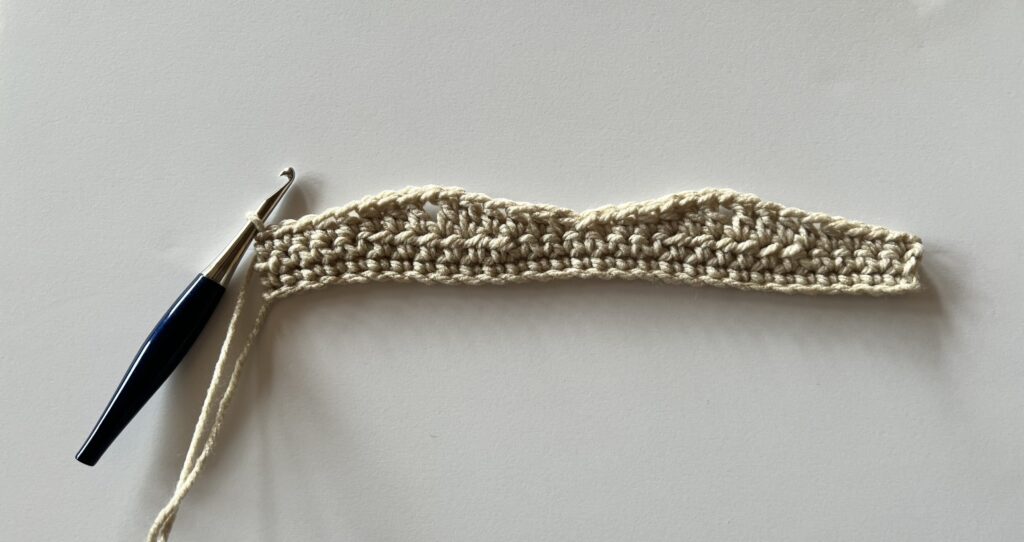
Change to Color B
Setup Row 4: ch 1, sc, FPsc in next 2 sts, *FPhdc in next 3 sts, FPdc in next 2 sts, (dc, ch 1, dc) in ch-2 sp, FPdc in next 2 sts, FPhdc in next 3 sts, ** FPsc, sk 1, FPsc, repeat from * until 3 sts remain ending last rep at **, 2 FPsc, sc in last st. <214 sts>
Turn
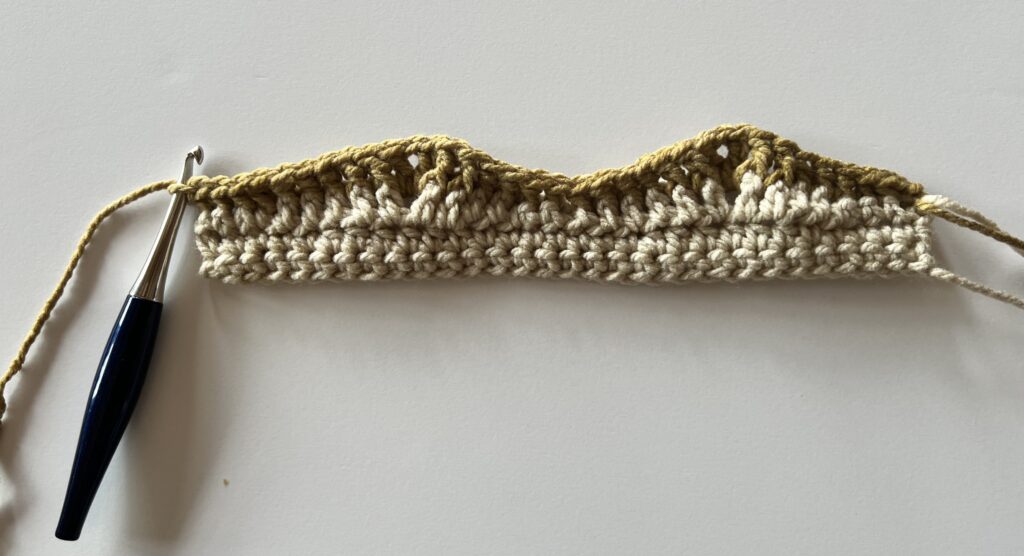
Setup Row 5: ch 1, sc, sk 1, sc in next 7 sts, *3 sc in ch-1 sp, sc in next 14 sts, repeat from * to last peak, 3 sc in ch-1 sp, sc in next 7 sts, sk 1, sc in last st. <257 sts>
Turn
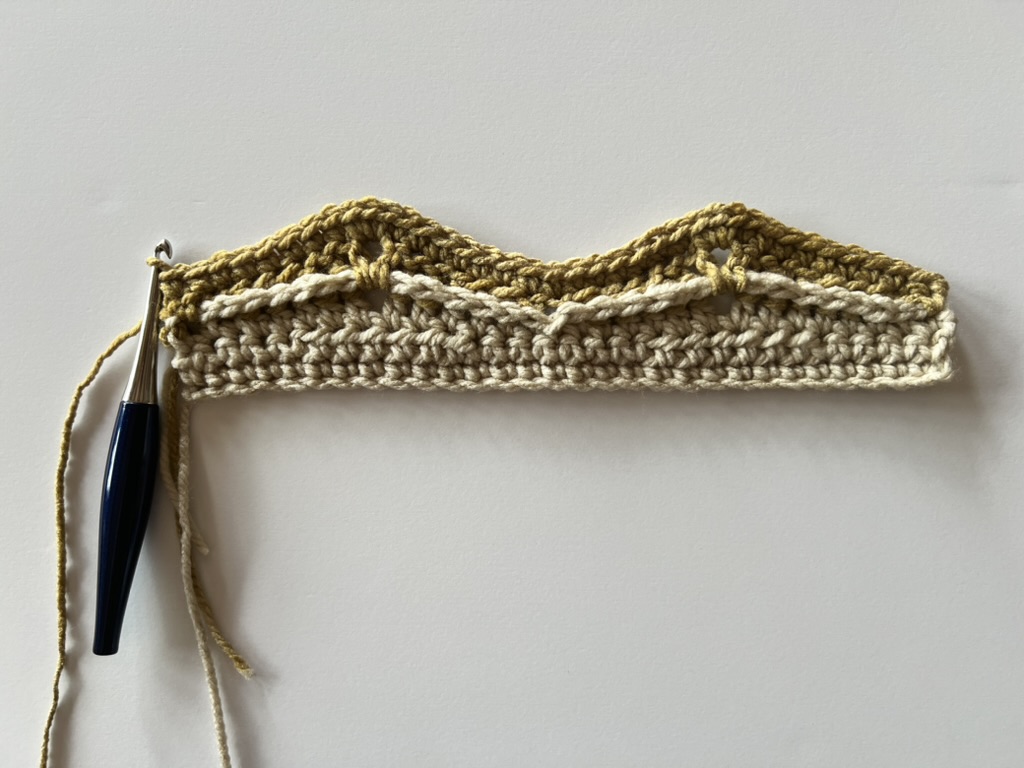
Say goodbye to the setup rows, you will not work them again. Proceed to Row 2.
Row 2: ch 3, sk 3, (the first stitch of the row counts as 1, here and throughout.) [3 dc in next st, sk 2] twice, (3 dc, ch 3, 3 dc) in next st, *sk 2, 3 dc in next st, sk 2, dc3tog, sk 4, dc3tog, sk 2, 3 dc in next st, sk 2, (3 dc, ch 3, 3 dc) in next st. Rep from * to last 9 sts, sk 2, [3 dc in next st, sk 2] twice, dc in last st. <62 3-dc clusters, 28 dc3tog, 2 dc, 15 ch-3 sps>
Turn

Row 3: ch 3, sk sp between turning ch and next 3 dc group, 3 dc in each of next 2 sps, (3 dc, ch 3, 3 dc) in ch-3 sp, *3 dc in next sp, dc3tog in next sp, sk next sp, dc3tog in next sp, 3 dc in next sp, (3 dc, ch 3, 3 dc) into ch-3 sp. Repeat from * to last 3 sp, 3 dc in each of next 2 sps, dc in sp between last 3 dc group and turning ch. <62 3-dc clusters, 28 dc3tog, 2 dc, 15 ch-3 sps>
Turn
Row 4: ch 1, sc in first st of the row, sk 1, sc in next 8 sts, *3 sc in next ch-3 sp, sc in next 14 sts, repeat from * to last ch-3 sp, 3 sc in last ch-3 sp, sc in next 8 sts, sk 1, sc in top of turning ch. <259 sc>
Turn
Row 5: ch 3, sk 2, dc in next 8 sts, *3 dc in next st (You should be working into the center stitch of the 3 sc. If not, you may have skipped incorrectly in the beginning of the row, or missed the sk 1 at the end of Row 4.) dc in next 7 sts, sk 2, dc in next 7 sts, rep from * to last 11 sts, 3 dc in next st, dc in next 8 sts, sk 1, dc into last st. <257 dc>
Turn
Change to Color C
Beth McKee Elliott
aka Betty McKnit
Beth McKee Elliott, also known as Betty McKnit, is a crochet and knitting designer, instructor, community leader, and Master Somatic Movement Therapist and Educator. Her signature style, 6-Day Crochet, is showcased in the viral crochet patterns the 6-Day Kid Blanket and 6-Day Star Blanket.
She specializes in Somatic Crochet and Knitting, a mindfulness practice that combines crochet/knitting with body awareness techniques to prevent injury and promote well-being and creativity in crafting.
In addition to being a crochet designer, Beth is a choreographer. She is the creator and director of Small Plates Choreography Festival, Haven Movement Company, and the Dance Maker Podcast.
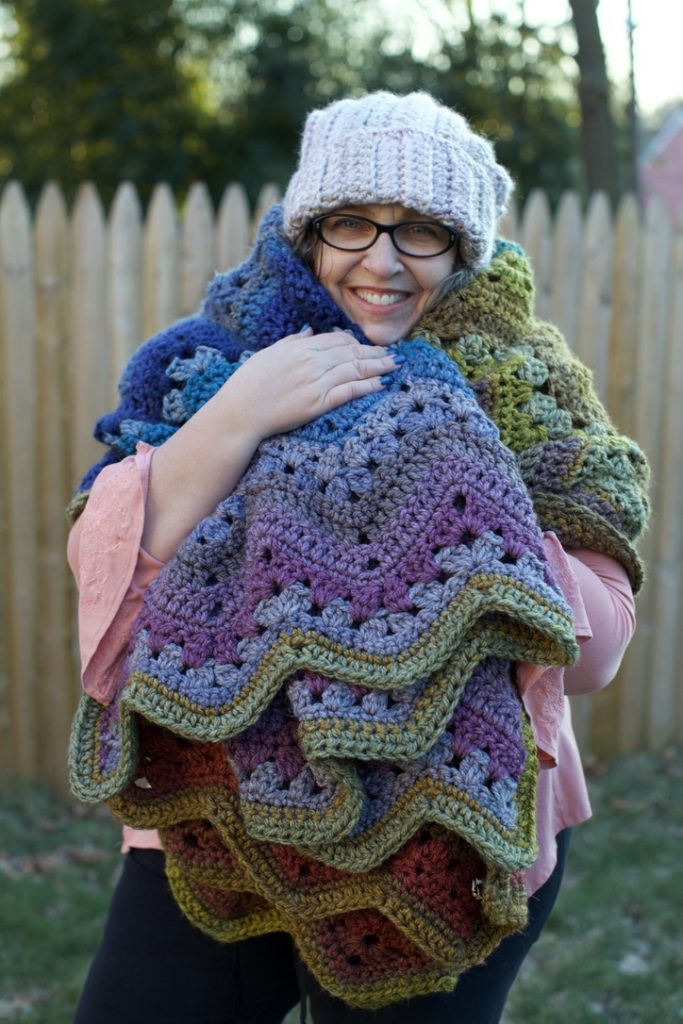
Row 6: ch 3, sk first 2 dc, FPdc in each of next 8 sts, *3 dc in next dc (you should be working into center stitch of 3 dc),FPdc in next 7 dc, sk 2, FPdc in next 7 dc, rep from * to last 10 dc, 3 dc in next dc, FPdc in next 8 dc, sk 1, dc in top of turning ch. <257 sts>
Turn
Row 7: ch 1, sc into first st, sk 1, sc into each st to last st, sk last st, sc in top of turning ch. <257 sc>
Turn.
Repeat rows 2-7 changing colors after row 5 each time, and working colors in order changing to color D next, follow with E and F, then (ABCDEF) four times, and (ABCDE) once. On the last repeat change to Color F for rows 6 and 7. Be sure to end your last row 7 with the last color of your sequence.
Repeat rows 2-4 Continuing with Color F (or the last color of your sequence).
For straight top, do not fasten off, turn and continue to Top Edge Rows with Color F (or last color of your sequence). If you started with a chevron start and would like to end with one, you can end here and proceed to the border rounds or add a border of your choosing.
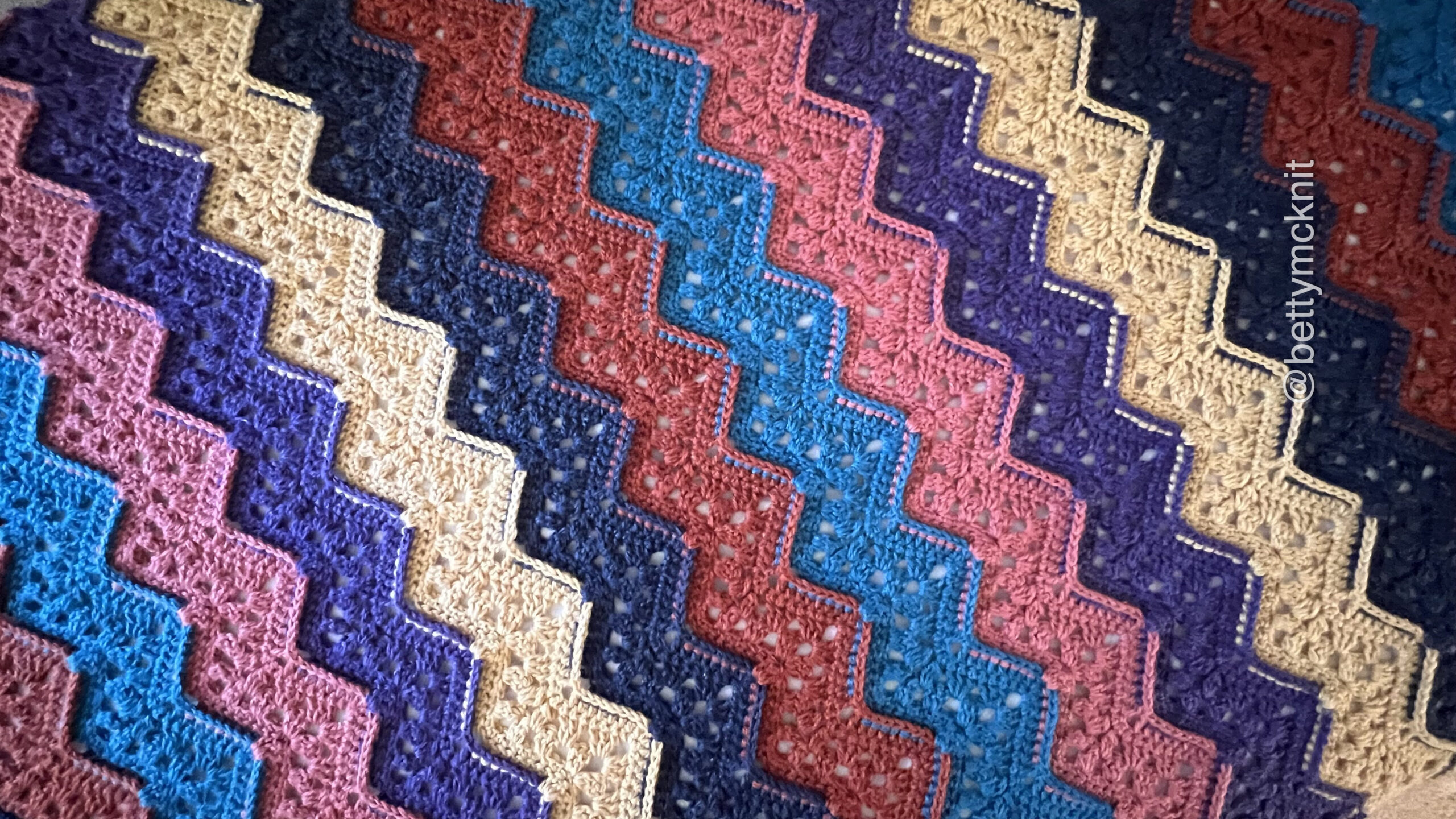
Top Edge
Top Edge Row 1: Continuing in Color F (or last color of your sequence), ch 3, sk 2, dc in next 4 sts, hdc in next 3 sts, sc in next 3 sts, *hdc in next 3 sts, dc in next 3 sts, sk 2, dc in next 3 sts, hdc in next 3 sts, sc in next 3 sts, repeat from * to last 9 sts, hdc in next 3 sts, dc in next 4 sts, sk 1, dc in last sc. 227 sts.
Turn
Change to Color A
Top Edge Row 2: Ch 3, counting the stitch under the turning chain, sk 2, FPdc in next 3 sts, FPhdc in next 3 sts, FPsc, sc, FPsc, *FPhdc in next 3 sts, FPdc in next 2 sts, sk 2, FPdc in next 2 sts, FPhdc in next 3 sts, FPsc, sc, FPsc, repeat from * to last 8 sts, FPhdc in next 3 sts, FPdc in next 3 sts, sk 1, dc in turning ch. 197 sts.
Turn
Top Edge Row 3:
Ch 3, counting the stitch below the turning chain, sk 2, hdc in next 3 sts, *sc in next 7 sts,** hdc in next 6 sts, repeat from* until 5 sts remain ending last rep at **, hdc in next 3 sts, sk 1, hdc in turning ch. 195 sts.
Turn
Top Edge Row 4:
Ch 1, sc in each st to end. 195 sts.
Fasten off. Continue to Border Round 1.
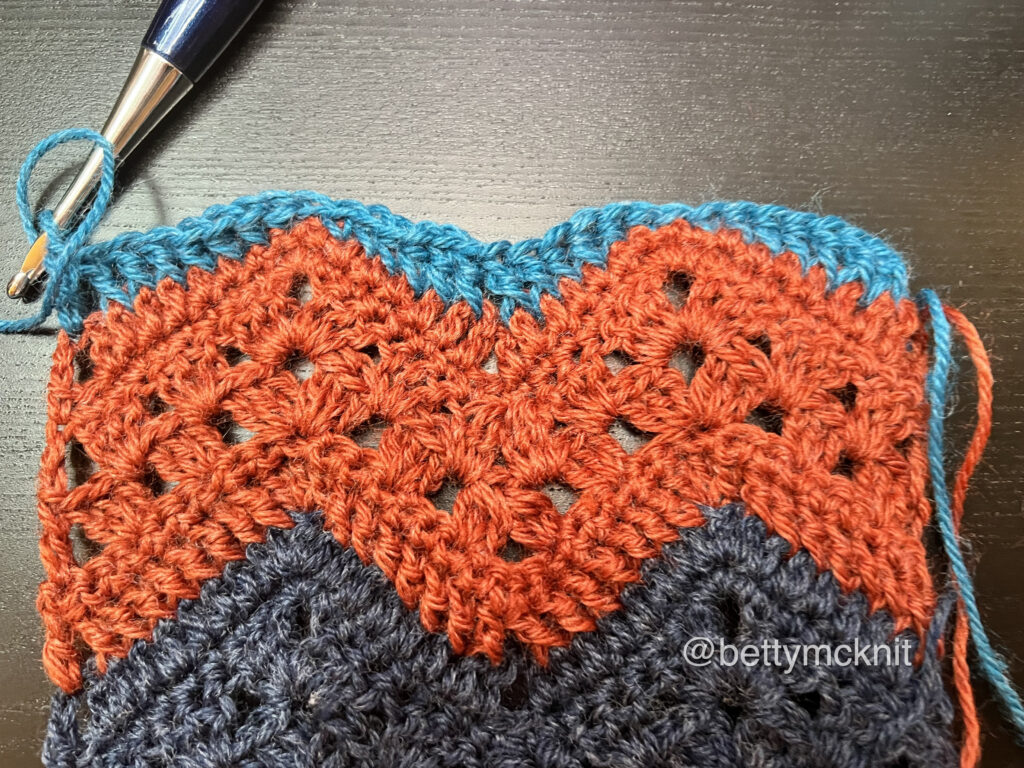
Border Round 1:
With ridge side facing, join Color A with sc to top left corner of the blanket, sc in same st. Working down the left side into the sides of sts, sc down the side of the blanket. Treat the turning chains and the sc and dc stitches like foundation chains and work under 2 threads of each stitch and leave one thread below. This creates a beautiful even edge to the work.
The number of sc you will put in each stitch will vary depending on your tension, but a general rule is 2 sc per dc, 2 sc per turning ch 3, and 1 sc per sc. Lay your work down often to check that your edge is laying flat and adjust the number of stitches accordingly.
When you reach the corner, work 3 sc into the corner stitch, and continue across the bottom working sc into the bottom of your foundation chain. Work 3 sc into the next corner and continue up the right side of the blanket working into the sides of the sts as before, work 3 sc in corner. sc in each st across top of blanket and finish with sc in the same st as the first sc at the start of the round. Join with sl st to first sc. Do not fasten off or turn.

Border Round 2:
Continuing Color A, (ch 3, 2 dc, ch 3, 3 dc) in same st, *sk 2, sc, sk 2, (3 dc, ch 3, 3 dc) in next st. Repeat from * around, sk 2, join with sl st to starting ch 3. Adjust your skips so that the (3 dc, ch 3, 3 dc) lands in the corner sts.
Turn
Change to Color B
Border Round 3: Join with sc to any ch-3 sp, sc in same sp, *FPhdc in next 3 dc, sk sc, FPhdc in next 3 dc, 3 sc in ch-3 sp, Repeat from * around, ending with sc in first ch-3 sp. Join with sl st to first sc.
Turn
Border Round 4: Continuing Color B, (ch 3, 2 dc, ch 3, 3 dc) in same st, *sk 2, sc, sk 2, (3 dc, ch 3, 3 dc) in next st. Repeat from * to corner, (ch 1, 3 sc, ch 1) in center sc in corner, repeat from * around, working (ch 1, 3 sc, ch 1) in each corner sc, end with sk 2, join with sl st to starting ch 3.
Turn
To end border here, change colors and skip to Border Round 7.
Change to Color C
Join one of my online communities to knit and crochet along with friends, get help with pattern questions, show off your makes, and access tons of free resources for making 6-Day Crochet and other Betty McKnit designs.
Border Round 5: With Color C, join with sc to any ch-3 sp, sc in same sp, *FPhdc in next 3 dc, sk sc, FPhdc in next 3 dc, 3 sc in ch-3 sp, Repeat from * to corner, (ch 1, 3 sc, ch 1) in center sc in corner, repeat from * around, ending with sc in first ch-3 sp. Join with sl st to first sc.
Turn
Border Round 6: Continuing Color C, (ch 3, 2 dc, ch 3, 3 dc) in same st, *sk 2, sc, sk 2, (3 dc, ch 3, 3 dc) in next st. Repeat from * to corner, 3 hdc in ch sp, (3 dc, ch 3, 3 dc) in center sc in corner, 3 hdc in ch sp, repeat from * around, working each corner as first, end with sk 2, join with sl st to starting ch 3.
Turn
Change to Color D
Border Round 7: Join with sc to any ch 3 sp, picot, sc in same sp, *FPhdc in next 3 dc, sk sc, FPhdc in next 3 dc,** [sc, picot, sc] in ch-3 sp, Repeat from * to 3 hdc before corner, FPhdc in each of 3 hdc, FPhdc in each of 3 dc in corner, (sc, PICOT, sc) in ch-3 sp, FPhdc in next 3 dc, FPhdc in next 3 hdc, repeat from *, working corners as first corner, and ending last repeat at **. Join with sl st to first sc.
Fasten off. Weave in all ends.
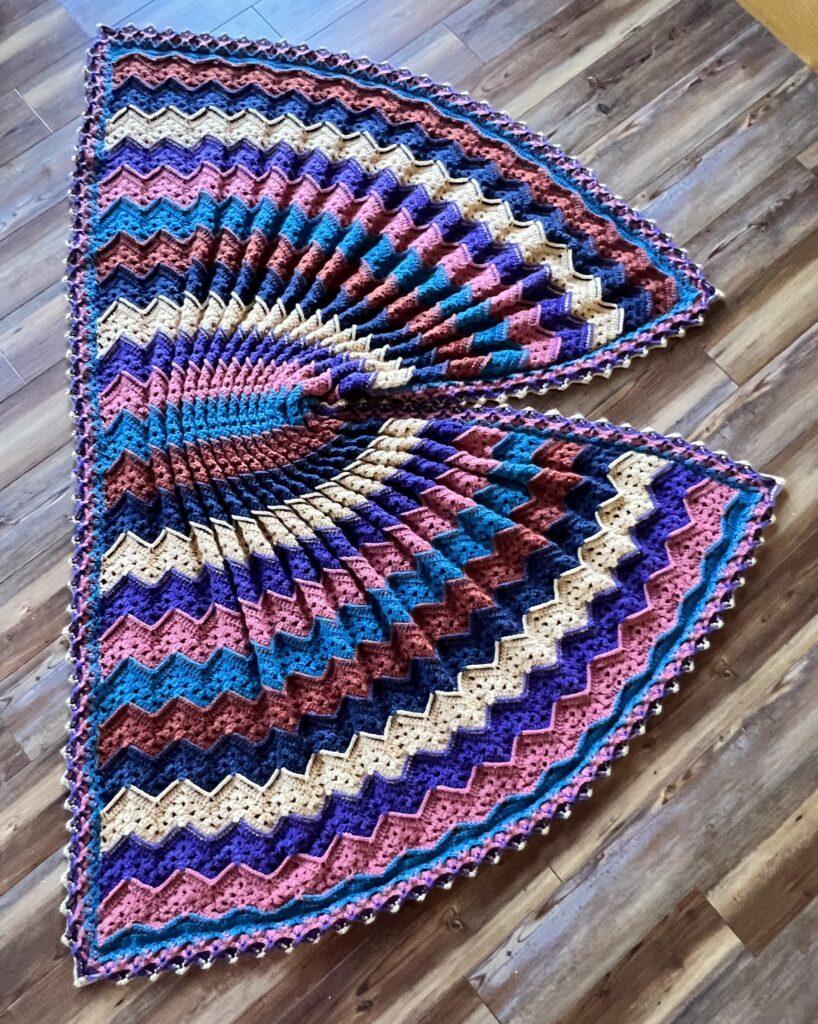
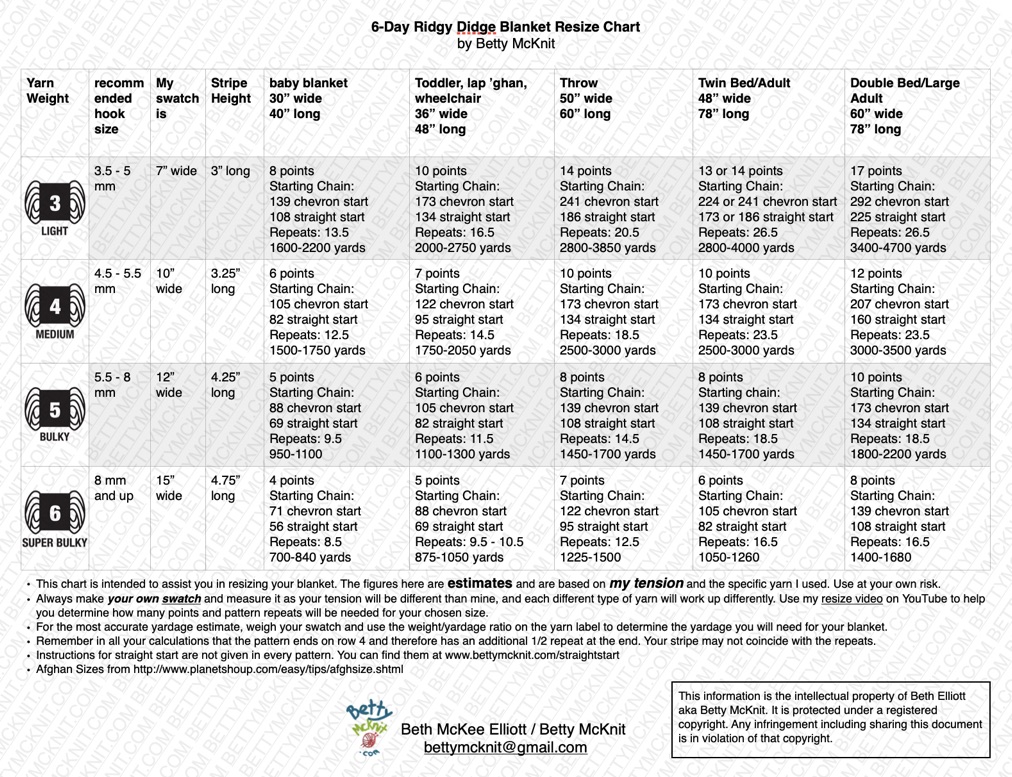
The Ridgy Didge Stripe was conceptualized by Diane Kagay and members of the 6-Day Kid Blanket Community. The name was suggested by Sue McKinnon and Katie Poli. Thank you to our members for their creative contributions to the 6-Day Kid Blanket family of patterns.
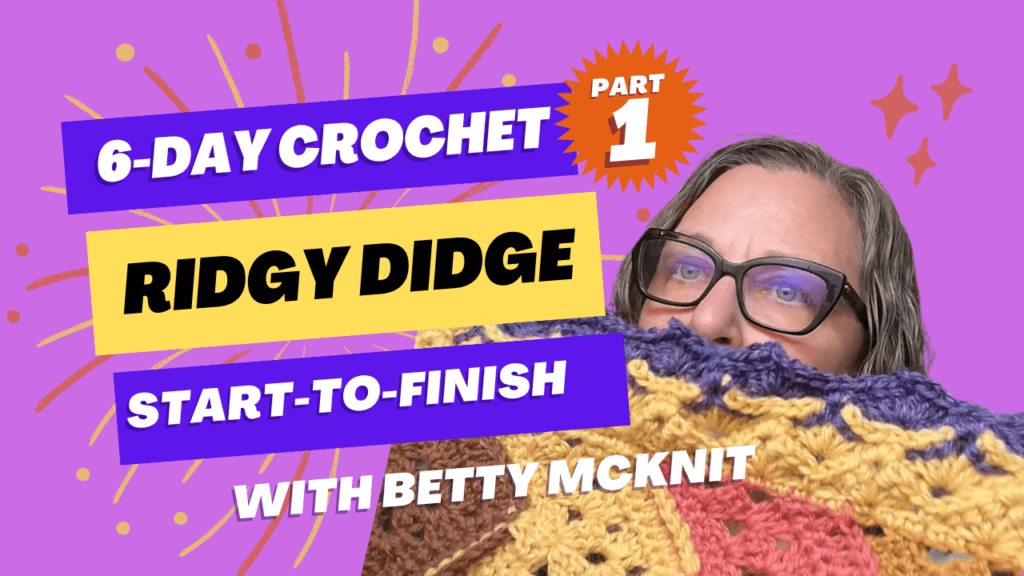
This pattern is the intellectual property of Beth McKee Elliott/Betty McKnit. This pattern, The 6-Day Kid Blanket, “6DKB” and derivative works are also protected by copyright. Publishing translations, corrections, variations, or tutorials of this pattern, online or elsewhere without written permission from the owner is a violation of copyright.
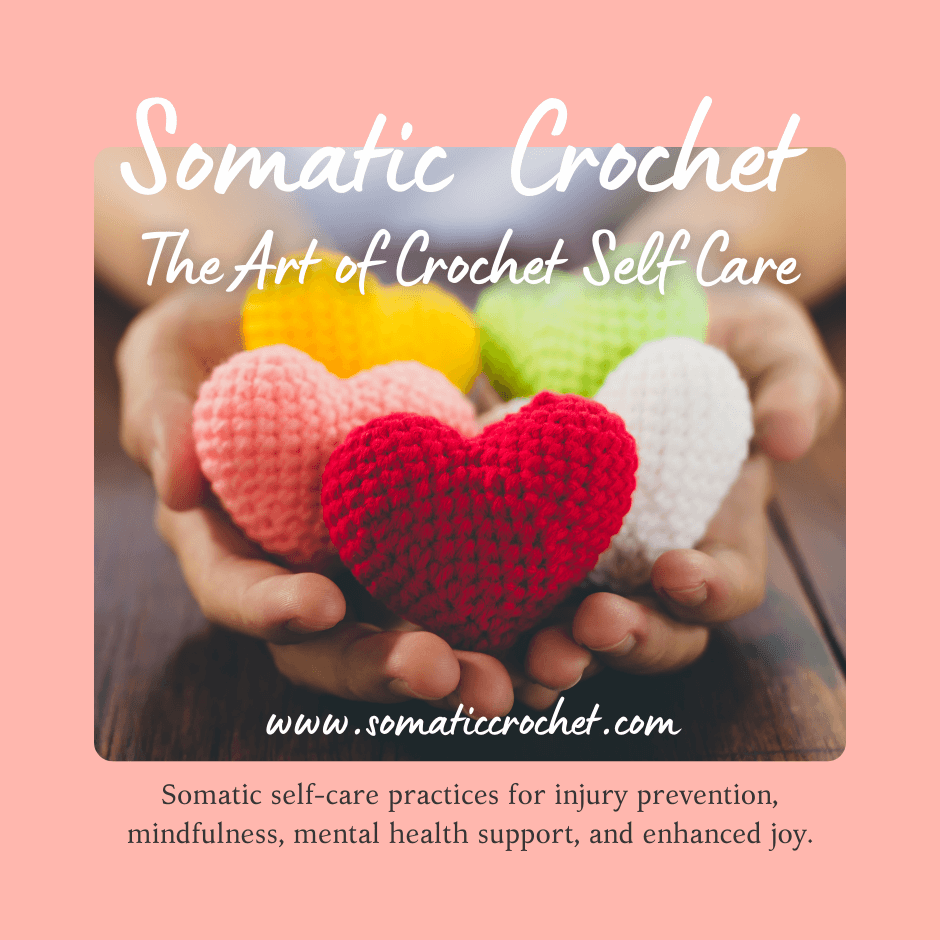
The stitch pattern is inspired by”Vivid Chevrons” #110 from 200 Ripple Stitch Patterns by Jan Eaton.
Reprinted with permission from Quarto Publishing.
©Beth McKee Elliott/Betty McKnit®
www.bettymcknit.com

